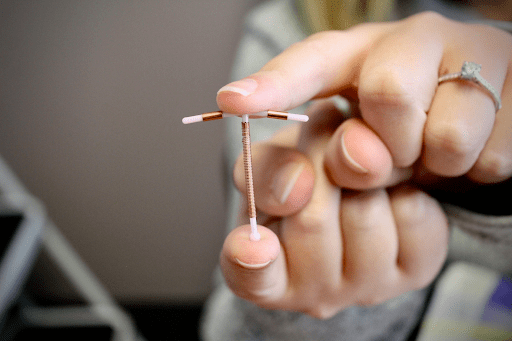
Contraceptive decisions are influenced not just by medical facts but by deeply personal considerations — life stage, future plans, cultural context, side effects, and trust in one’s healthcare provider. In recent years, however, a quiet shift has been happening: more women are leaning towards long-acting reversible contraception (LARC), particularly the intrauterine device (IUD), as a dependable long-term solution.
The Shift Towards Long-Term Contraceptives
What we’re seeing in contraceptive preferences isn’t just about newer technologies or improved access; it’s a reflection of how women are reframing reproductive health as part of holistic life planning.
Short-term methods like the pill, patch, or condom still play important roles, especially in early reproductive years or transitional phases. But for many women — particularly those navigating career milestones, managing health complexities, or spacing families with intention — the appeal of “set it and forget it” contraception is undeniable.
Key Benefits of IUDs
While no contraceptive method suits everyone, many women are finding that IUDs strike a practical balance between autonomy, reliability, and flexibility.
1. High Efficacy with Low Maintenance
At over 99% effectiveness, IUDs are among the most reliable reversible birth control options available. And their success isn’t dependent on perfect use — they work regardless of daily routine, travel schedule, or memory lapses.
This low-maintenance nature is often cited as the standout advantage: after the initial insertion, most users simply get on with their lives. Whether it’s 3 years or 10, the IUD quietly does its job in the background.
2. Long-Term Cost Efficiency
While the upfront cost of an IUD can be a hurdle, its cost-effectiveness over time is difficult to ignore. Once amortised, IUDs tend to outperform pills, patches, and rings in financial terms, especially over multi-year use.
| Method | Estimated Annual Cost (SGD) | Effective Duration | Requires Regular Action |
| IUD (hormonal) | ~$100–$180 (amortised) | 3–7 years | No |
| Oral contraceptive pill | ~$300–$600 | Ongoing | Daily |
| Patch/Ring | ~$400–$700 | Ongoing | Weekly/Monthly |
*Costs vary widely depending on region and healthcare coverage.
3. Reversibility and Fertility Preservation
IUD can be removed at any time, and fertility typically resumes quickly — often within the first cycle post-removal. This makes the IUD a suitable option for women who are delaying pregnancy, are unsure about their long-term plans, or simply want to keep their options open without committing to a permanent procedure.
4. Options to Suit Different Needs
There are two major types, each serving distinct preferences and health needs:
- Hormonal IUDs:
- Release progestin that thickens cervical mucus and thins the uterine lining
- It can reduce menstrual bleeding and cramps, offering added benefits for women with conditions like endometriosis or heavy periods
- Effective for 3–7 years
- Copper IUDs:
- Completely hormone-free — ideal for those avoiding synthetic hormones
- Functions by creating an environment toxic to sperm
- Lasts up to 10 years, though it may increase menstrual flow or cramps in some users
This variety empowers users and providers to tailor contraception to the individual, considering not just efficacy but lifestyle, medical history, and comfort with hormones.
Who Should Consider an IUD?
IUDs aren’t a universal solution, but they meet the needs of a range of women, especially those seeking a balance between reliability, autonomy, and minimal day-to-day involvement.
If you are looking for a reliable and low-maintenance contraceptive, the IUD birth control option may suit your long-term needs.
Suitable Candidates
Healthcare providers may recommend IUDs to individuals who fall into one or more of the following categories:
- Prefer not to take daily or routine contraception
For women with inconsistent schedules — shift workers, frequent travellers, or anyone who struggles to maintain a daily routine — an IUD removes the pressure of remembering pills or replacing rings and patches. - Do not plan to become pregnant in the next few years
With durations spanning 3 to 10 years, IUDs offer long-term peace of mind for those postponing pregnancy without committing to permanent solutions like sterilisation. - Have contraindications to oestrogen
Hormonal IUDs contain only progestin, and copper IUDs contain no hormones at all. This makes them suitable for women who can’t use oestrogen due to conditions like migraine with aura, hypertension, or clotting risks. - Experiencing heavy or painful periods
Hormonal IUDs can significantly reduce menstrual flow and cramping — a relief for those with menorrhagia, adenomyosis, or endometriosis. - Are seeking discreet contraception
IUDs are not visible, which is valuable for women who prefer not to disclose or discuss their contraceptive choices.
Lifestyle Compatibility
| Lifestyle Factor | IUD Compatibility |
| Irregular schedule or travel | ✔ No daily adherence is required |
| Preference for privacy | ✔ Invisible and discreet |
| Long-term contraception needed | ✔ Lasts 3–10 years, depending on type |
| Avoiding oestrogen or hormones | ✔ Copper IUD available; hormonal IUDs are progestin-only |
| Limited access to regular care | ✔ Fewer follow-up visits needed |
Final Thoughts on Choosing the Right Option
Many women today are navigating careers, caregiving, and complex health needs — often all at once. In that context, a method that requires no daily management and adapts quietly in the background is naturally compelling.
However, the IUD shouldn’t be viewed as a default answer or gold standard. It’s not “better,” just better for some. This is where a healthcare provider plays a critical role. They bring not just clinical insight but the ability to tailor guidance to your specific health history, reproductive goals, and any underlying conditions.
A pressure-free conversation with a trusted healthcare provider can make the difference between choosing a method and choosing the right method.







